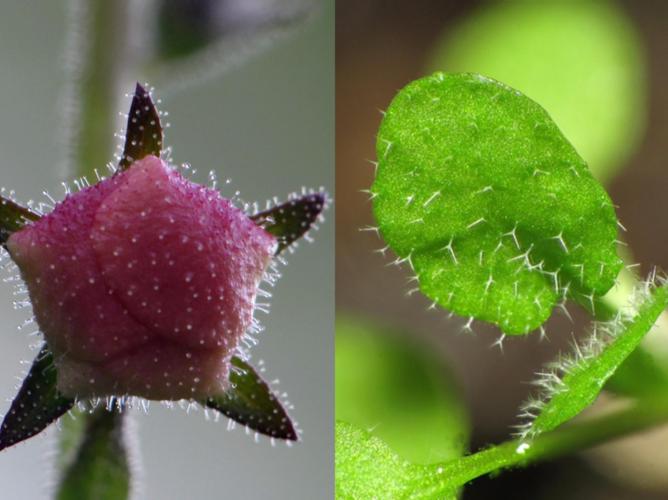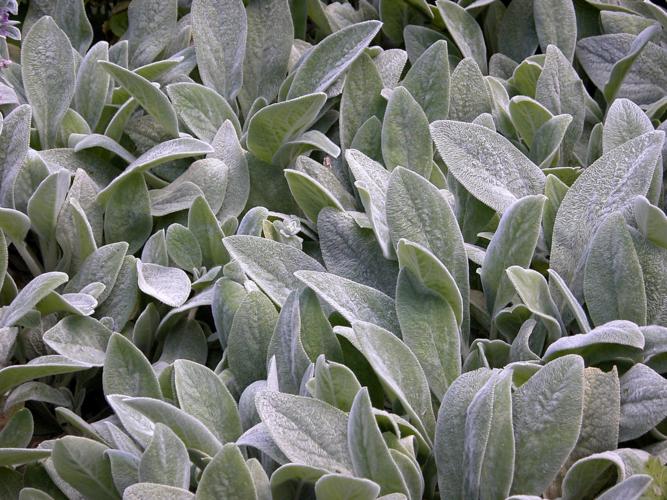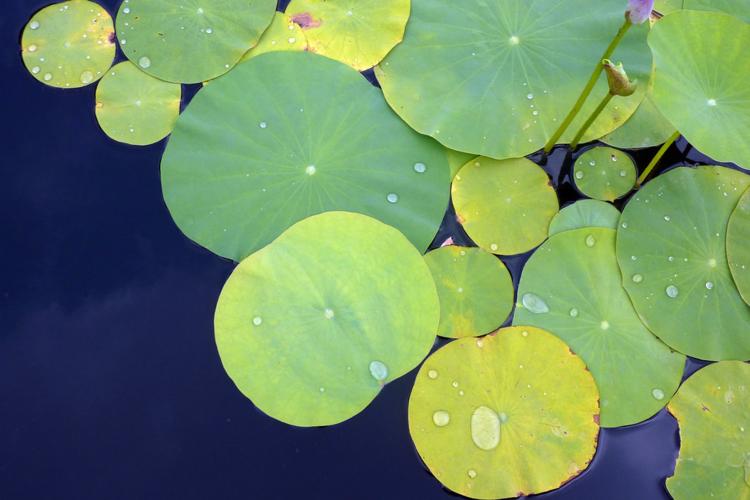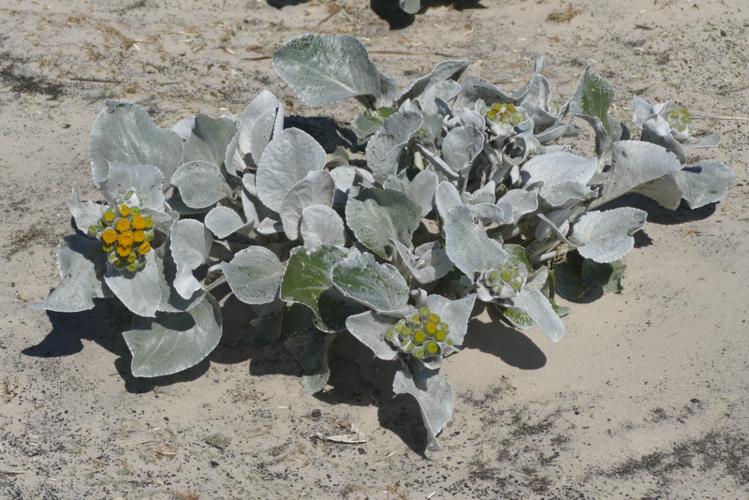March 3, 2021 by Passiflora
Gray Foliage Explained
Gray plant foliage occurs in nature due to a variety of plant adaptations. I’d like to discuss two of the most common of these and why they occur. The first is due to an abundance of trichomes and the other being from a build up of epicuticular waxes.

Plant trichomes are fascinating and extremely diverse in form and function. Trichomes develop on the surface of plants and can be single celled structures or be composed of multiple cells, and come in a variety of shapes. Multicellular glandular trichomes, like those found on Cannabis sativa, look like a sphere on a stalk and store/secrete compounds which break down under UV light. These trichomes help shield the plant from intense sunlight. Alternatively, glandular trichomes can secrete a tasty snack as a reward for insects, especially pollinators, and food glandular trichomes occur most frequently in the orchid family. The single celled trichomes, or unicellular trichomes, are also interesting. They can show remarkable shapes and structures while still being a single cell, like the branching trichomes of Arabidopsis. A major function of trichomes on plants is to prevent water loss. A dense covering of trichomes on the surface of a plant slows the air directly around the plant and prevents some water loss during transpiration. This dense covering of trichomes frequently comes off as a silver or gray colour, such as in Stachys byzantina. There’s still so much to discuss when it comes to these structures on plants but for brevity I’ll leave it at that.

The other common way plants take on a gray colouring is from their epicuticular waxes. Epicuticular wax is made up of hydrophobic molecules (and tons of other molecules but for the sake of brevity I won’t bring them up) which are exuded by plants. Epicuticular waxes act as an intermediary barrier between a plant and its environment, and are a handy tool for plants in a plethora of situations. From protecting from herbivorous insects, microbes, harsh sunlight, and preventing water loss it already seems like they’re a jack of all trades structure but it goes further than that. If water sticks around on a leaf for too long it facilitates bacterial and fungal growth and aids these potential pathogens into the stomata whenever a plant needs to breathe. A highly hydrophobic layer also prevents the dirt and dust found in rain from settling on a plant, which would otherwise prevent photosynthesis. When a plant produces a nectar reward for pollinators some insects will try to climb onto the outside of the flower, chew their way through the sepals and petals to get to the nectar without entering the flower — a way to cheat the plant and not be burdened with the weight of its messy pollen. Some plants have responded by developing slippery epicuticular waxes on the base of their flowers which prevent these nectar thieves from cheating the plant. The epicuticular wax of lotus leaves is an area of research for their superhydrophobic properties. The lotus leaves create tiny wax crystals which repel water extremely well along with any mud or dirt. A way to self clean without expending energy would be a boon to many industries and lotus leaves may teach us how.

With some plants, the need to prevent water loss and block harsh sunlight is far greater than the energetic cost of developing waxes on their surface. The development of an extra thick wax layer is especially apparent in many desert plants such as on Pilosocereus cacti, some asters or euphorbia species.
